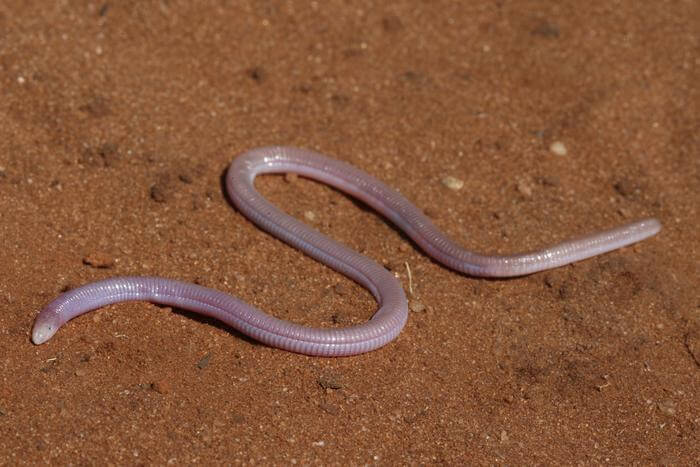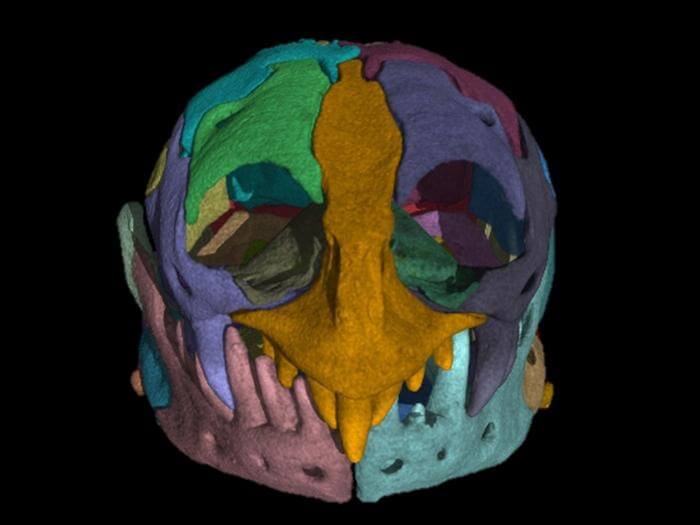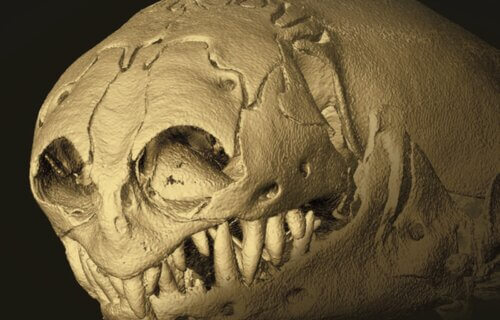AUSTIN, Texas — A creature residing here on Earth is doing its best cosplay of a creature from the blockbuster film “Dune.” Researchers in Texas say this worm possesses a skull resembling a jigsaw puzzle and a prominent central tooth, making it look like a tiny version of the sandworms from the sci-fi film.
For the first time, scientists obtained a detailed view of the scaly, subterranean reptiles known as amphisbaenians using CT scans, and the findings were astonishing. Initially, they drew parallels between these creatures and the smaller sandworms from “Dune.” However, the team from the University of Texas at Austin later concluded that such the comparison didn’t fully capture their uniqueness.
Although amphisbaenians are found globally, our understanding of their behavior in the wild remains limited due to the difficulty of observing them in their natural habitats beneath the sand and soil.
These reptiles, characterized by vertebrae, scales, that large central tooth, and occasionally small forearms, dwell underground. They burrow tunnels and prey on nearly anything they come across, mirroring the monstrous building-size creatures of “Dune” — on a much smaller scale.
However, two recent studies published in The Anatomical Record are revealing more about the enigmatic nature of these animals and their unique anatomy. Utilizing a micro-CT scanner at The University of Texas at Austin’s Jackson School of Geosciences, researchers conducted a thorough comparative analysis of 15 amphisbaenians from southern Africa and provided a detailed description of every cranial anatomical feature of the species Zygaspis quadrifrons.
These studies represent the most comprehensive examinations of southern African amphisbaenians to date.

Through scanning, the researchers were able to create large 3D-printed models of individual bones, enabling close examination of structures like the tabulosphenoid — a bone almost entirely enclosed within the skull and nearly invisible without this technology.
“You could fit three skulls of the Zygaspis quadrifrons on the nail of my pinky. We can now look at these really small vertebrate organisms in a measure of detail that we never had before,” says study lead author Dr. Christopher Bell in a media release.
The team’s research started over 15 years ago when co-author and Sam Houston State University Professor Patrick Lewis spearheaded an expedition to Botswana. Their mission was to locate and study a variety of animals.
During their efforts to dig and sample the environment, the researchers started capturing amphisbaenians. At that time, Dr. Lewis had limited knowledge about these creatures. However, he expressed surprise when one of his students presented him with an amphisbaenian, noting how something that resembled a worm could possess such strength.
“They wriggle around and try to escape and move in ways that worms just aren’t able to. These are much more like little snakes in the way that they move and interact. It’s just surprising for something that’s so tiny. You just don’t expect that behavior,” Lewis says.

The striking images from the scans, reminiscent of a science fiction film script, showcase “sutures” – resembling rows of stitches within the worms’ skulls. These sutures interlock, fitting together precisely like a jigsaw puzzle.
Furthermore, the images vividly capture the amphisbaenians’ unusual, singular central tooth. This tooth interlocks with two bottom teeth, endowing the small creature with a formidable bite.
“Combined with the powerful jaw muscles in amphisbaenians, it gives them a ferocious bite for an animal of their size. They can bite and tear out pieces of their prey,” Bell says.
Lead author Antonio Meza, a doctoral student at Arizona State University, explained that though snakes and other reptiles are born with an egg tooth that allows them to break out of their shell, they later lose them.
“But in amphisbaenians, they just have kept it,” Meza says.
His analysis further confirmed that female Zygaspis quadrifrons are larger than their male counterparts. Given the scant biological and ecological information available on amphisbaenians, scientists assert that anatomical studies represent the most effective method for researchers to gain insights into these peculiar animals and their concealed existence beneath the surface.
SWNS writer James Gamble contributed to this report.
